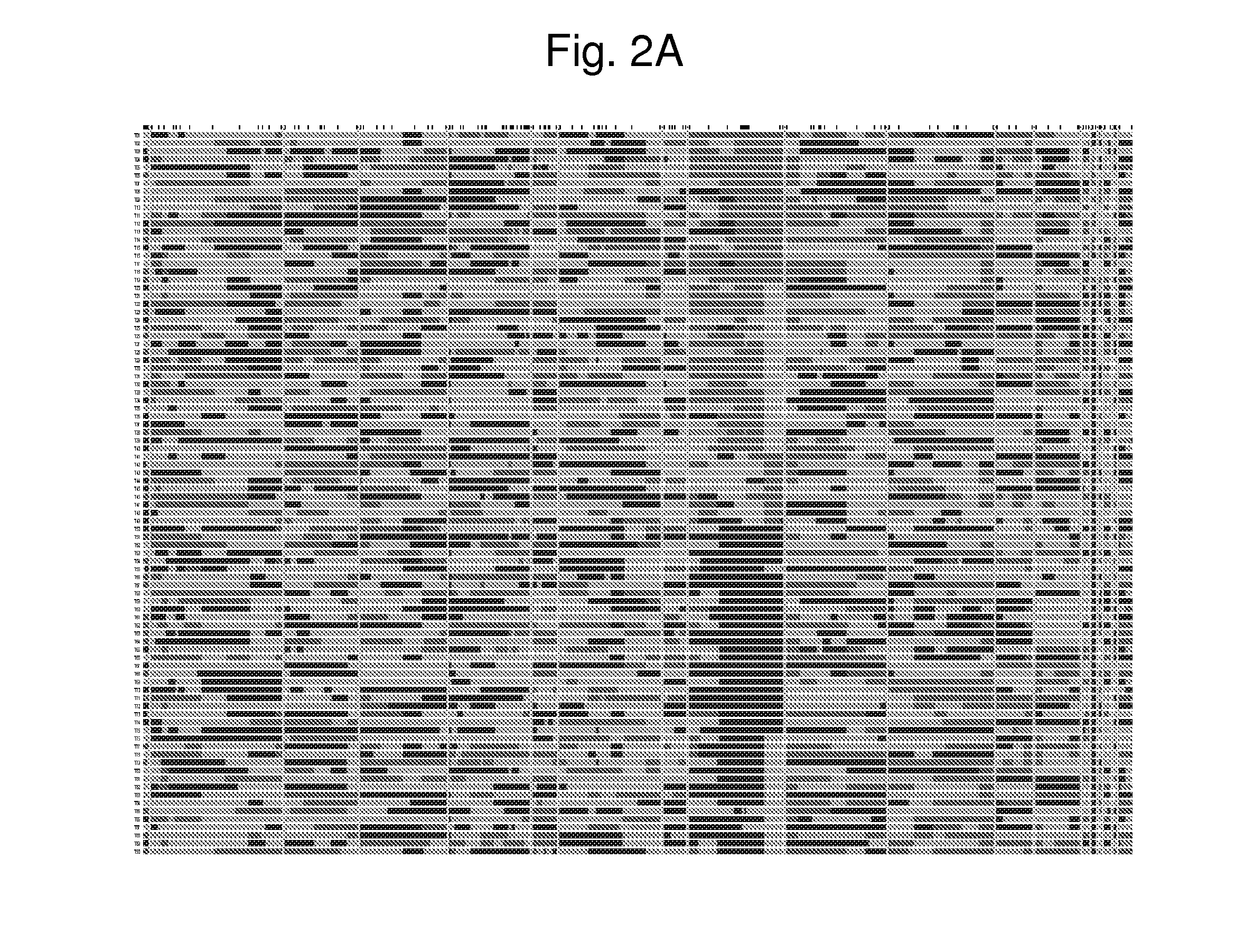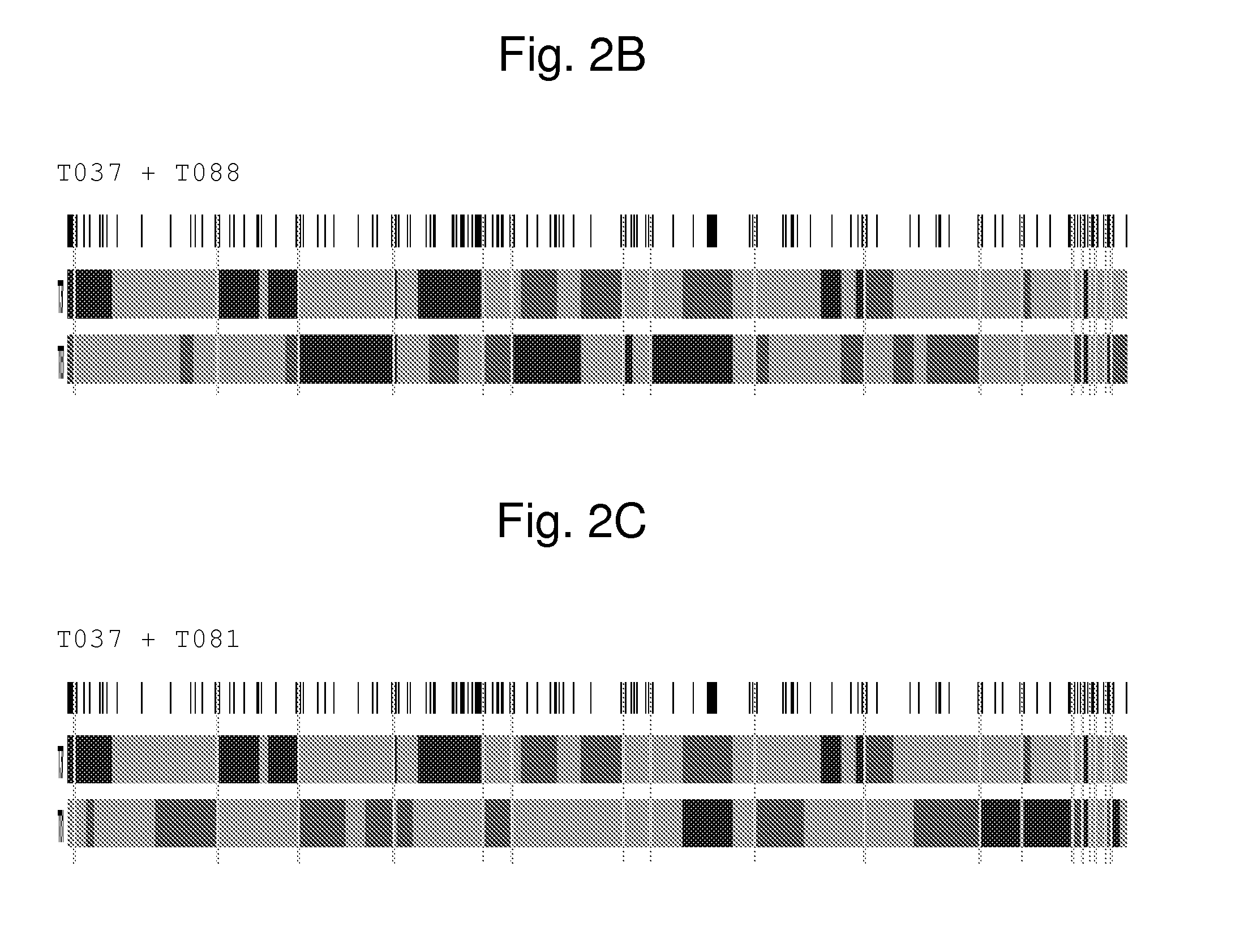Reverse synthesis of breeding lines
a breeding line and reverse synthesis technology, applied in the field of methods, can solve the problems of f1 hybrids that are not suitable or better than either of individual parental lines, unpredictable phenotypes, and organisms that remain heterozygous for a considerable number of reasons
- Summary
- Abstract
- Description
- Claims
- Application Information
AI Technical Summary
Benefits of technology
Problems solved by technology
Method used
Image
Examples
example 1
[0093]A tomato cultivar excelling in its high productivity and exceptionally good taste was first found as an individual plant in a segregating population in breeding trials. It was however recognised that in this stage of breeding the genetic composition of the plant was complex, in the sense that the traits for which the individual plant was appreciated would not breed true. Therefore, it was not possible to produce parental lines from this individual plant that would, when crossed with each other, give rise to a hybrid that resembles its unique genetic composition and that hence would allow its commercialisation in the traditional way by seeds. The only way this superior plant could be commercialised was by vegetative propagation. This invention teaches the methodology that allowed the generation of a similar genotype and phenotype in a true seed form.
[0094]Clonally propagated plants of the tomato cultivar were grown in the greenhouse in De Lier, The Netherlands. Seeds from one i...
example 2
[0097]A phenotypically superior plant was identified in a segregating cucumber breeding population. To allow the rapid, large-scale and reproducible sexual propagation of this partially heterozygous cucumber plant, there was a need to create suitable parental lines that could be crossed to give rise to hybrid plants that were phenotypically identical or very similar to the starting plant.
[0098]The complete genomic sequence of the starting plant was determined by means of Illumina sequencing, and based on this sequence a set of informative genetic markers was selected. The selection comprised 87 genetic markers for which the starting plant was heterozygous, such that the homo- or heterozygosity of all seven chromosome pairs could be queried with the set of genetic markers, and the genetic markers were evenly spaced across each of the chromosomes.
[0099]Subsequently, a population of DHs was created from the starting plant by means of gynogenesis by means of the gynogenesis protocol for...
example 3
[0102]Using the cucumber plant of Example 2 as the partially heterozygous starting plant, a different approach was also followed, in parallel to the procedure outlined in Example 2. In this parallel approach, the superior cucumber plant was self-pollinated, and a resulting F2 population of 24 individuals was screened for the same set of 87 informative SNP markers. One F2 plant was selected based on its high degree of complementarity to one of the six selected DHs mentioned in Example 2, while being heterozygous for nearly all of the remaining SNPs for which there was no complementarity.
[0103]This situation was interesting because the allelic fixation in this F2 plant was nearly completely limited to alleles that were fixed in the complementary form in the selected DH line, whereas the SNPs that were present in a heterozygous state in the F2 plant retained the potential to segregate for both co-dominant alleles in the F3 generation (derived from selfing the F2 plant), thus allowing t...
PUM
 Login to View More
Login to View More Abstract
Description
Claims
Application Information
 Login to View More
Login to View More - R&D
- Intellectual Property
- Life Sciences
- Materials
- Tech Scout
- Unparalleled Data Quality
- Higher Quality Content
- 60% Fewer Hallucinations
Browse by: Latest US Patents, China's latest patents, Technical Efficacy Thesaurus, Application Domain, Technology Topic, Popular Technical Reports.
© 2025 PatSnap. All rights reserved.Legal|Privacy policy|Modern Slavery Act Transparency Statement|Sitemap|About US| Contact US: help@patsnap.com



